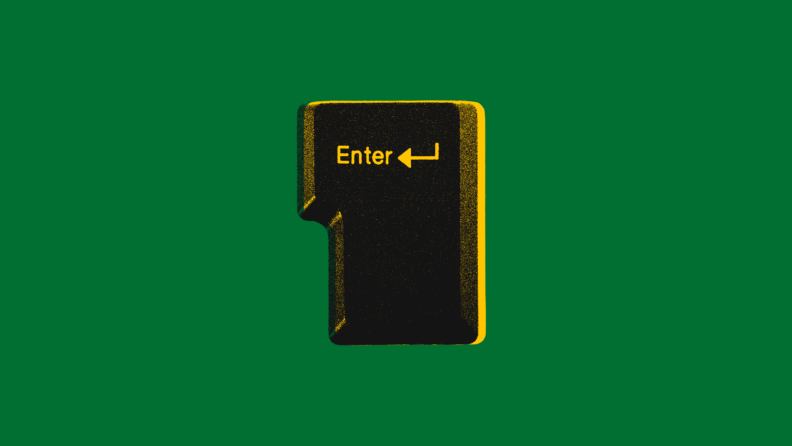Writing an RFP helps you clearly define your needs and evaluate vendors effectively, ensuring you find the best fit for your team
You might skip an RFP if you're a small organization with straightforward needs, saving time and effort
A well-crafted RFP can lead to better pricing and a solution that aligns perfectly with your goals
An RFP, or Request for Proposal, is a tool you use when you need to evaluate vendors and find the best marketing automation software for your needs. If you're tasked with finding and choosing the right solution, this guide's for you.
Crafting an RFP gives structure to vendor evaluation. It helps you ask smarter questions, gather clear responses, and compare options side by side. More importantly, it reduces risk by aligning your choice with business goals and team needs.
Taking the time to create an RFP will ensure that your team lands a solution that fits without wasted effort, budget, or time. Let’s get started!
The CMO's Marketing Automation RFP Template
Do You Actually Need an RFP?
When your team faces complex requirements or operates in a highly regulated industry, an RFP becomes essential. It helps you navigate vendor options and ensures compliance with internal and external standards. If your organization deals with multiple stakeholders or has a significant budget, an RFP is crucial to align everyone and avoid costly mistakes. Consider these situations when you truly need an RFP:
- Complex integration with existing systems
- Multiple departments need to collaborate
- Significant investment and budget approval needed
- Compliance with industry regulations
- Need for detailed vendor comparison
When an RFP Might be Overkill
If your needs are straightforward or your team is small, an RFP might not be worth the effort. You can often make a quicker decision without one, especially if you're familiar with the options. In these cases, explore my top choice of marketing automation software:
Top Marketing Automation Software To Consider
Here’s my list of the top 10 marketing automation software options available, to help you get started in your search:
RFI vs RFP vs RFQ: What’s the Difference?
Understanding the differences between RFIs, RFPs, and RFQs helps your team choose the right document for each purchase, saving time and reducing friction. An RFI gathers general information, an RFP solicits detailed proposals, and an RFQ requests specific pricing. Choosing the right one depends on what stage you are in the buying process and your specific needs:
| Document Type | Purpose | When to Use | What to Include | Level of Detail Required |
| Request for Information (RFI) | Gather general information about vendors and solutions | Early stage when exploring options | Vendor capabilities, product features | Low |
| Request for Proposal (RFP) | Solicit detailed proposals from vendors | When you need comprehensive solutions and comparisons | Detailed requirements, evaluation criteria | High |
| Request for Quotation (RFQ) | Obtain specific pricing for clearly defined products/services | When price is the main concern after narrowing down options | Itemized pricing, terms and conditions | Medium |
Common RFP Mistakes to Avoid
Rushing through an RFP or skipping key details can lead to confusion, wasted time, or choosing poor-fit vendors. By avoiding common mistakes, your team can create a smoother marketing automation software selection process. Here are the pitfalls to watch out for:
Insufficient Background or Context
Without enough background or context, vendors might not understand your needs. This can result in proposals that miss the mark. Ensure your RFP includes clear information about your company, industry, and specific challenges. This helps vendors tailor their responses to your situation.
Missing or Unclear Budget
Providing a budget range or discussing the cost of marketing automation software helps vendors propose realistic solutions. Without it, you might get proposals that are way out of your price range. Be upfront about your budget to save time and avoid sticker shock.
Vague Requirements or Legal Jargon
Vague requirements or excessive legal jargon can confuse vendors, leading to unsuitable proposals. Clearly state your needs and avoid unnecessary legal terms. Focus on what you want the software to achieve, using straightforward language.
No Evaluation Criteria Shared
Without sharing evaluation criteria, vendors might not know what you value most. This can lead to proposals that don't align with your priorities. Clearly outline how you'll assess proposals, whether it's based on features, support, or cost.
No Standard Format for Vendor Responses
If you don't specify a format for responses, comparing vendor proposals becomes difficult. This can slow down the decision-making process. Provide a standard template for responses to ensure consistency and make evaluation easier.
Assemble Your Marketing Automation Software RFP Team
Creating a strong RFP isn't a solo job; it needs input from a cross-functional team to ensure the final product meets everyone's needs. By involving the right people early, you reduce risk and avoid rework later on. Here's who you need on your team and why:
Project Sponsor
The project sponsor provides strategic direction and ensures the RFP aligns with business goals. They have the authority to make key decisions and allocate resources. This role is typically filled by a senior executive, such as a CMO or VP of Marketing, who champions the project.
Functional Experts
Functional experts bring specialized knowledge about what the software needs to do. They help define requirements and ensure the RFP addresses specific departmental needs. This group often includes IT specialists, marketing managers, and data analysts who understand the technical and operational aspects.
Procurement or RFP Writers
Procurement or RFP writers have the skills to draft clear and concise documents. They ensure the RFP is well-structured and compliant with procurement policies. This team might include procurement officers or experienced RFP writers who know how to communicate requirements effectively.
End Users and Stakeholders
End users and stakeholders provide insights into daily needs and challenges. Their feedback helps tailor the RFP to select a solution that improves workflows. This group could include marketing coordinators, sales representatives, and customer service staff who will use the software regularly.
Define Must-Haves & Goals
Before sending an RFP, your team needs to clearly define what the new solution must do—and why. Aligning around pain points, goals, and non-negotiables helps vendors respond more accurately and makes it easier to evaluate proposals. Consider the following as you outline your requirements:
- Pain points with current system: What frustrates your team about the current software? Identifying these issues helps you find a solution that addresses specific problems, like integration challenges or lack of automation.
- Required improvements and success outcomes: What do you hope to achieve with new software? Think about measurable outcomes like increased lead conversion rates or better customer segmentation.
- Functional, technical, and compliance needs: What features are non-negotiable? Consider things like data security, CRM integration, or compliance with industry regulations.
- User roles, usage levels, workflows: Who will use the software and how often? Define user roles and workflows to ensure the solution supports your team’s daily operations.
- Deployment preferences: Do you prefer on-premises or cloud-based solutions? Consider factors like scalability, maintenance, and IT resources when deciding how the software should be deployed.
Write the Marketing Automation Software RFP
Now it’s time to put everything together in a clear, structured RFP document. A well-organized, complete RFP makes it easier for vendors to respond accurately and for your team to evaluate those responses effectively. Here’s what you should include:
1. Executive Summary
The executive summary gives vendors a snapshot of your project. Outline your goals, key challenges, and what you hope to achieve with the new software. This section sets the tone and helps vendors understand the big picture, ensuring their proposals align with your objectives.
2. Scope of Work
Define the scope of work to clarify what you expect from the vendor. Include details on deliverables, timelines, and any specific tasks you want the vendor to handle. This helps vendors provide accurate proposals and ensures your team gets the services you need.
3. Technical Requirements
List your technical requirements to ensure compatibility with existing systems. Include details on integration, data migration, and platform specifications. By being specific, you help vendors assess whether they can meet your needs and avoid technical hiccups.
4. Vendor Qualifications
Specify the qualifications you expect from vendors, such as experience in your industry. Ask for case studies or references to validate their expertise. This helps you assess whether a vendor has the necessary skills and experience to deliver on your project.
5. Security and Compliance Needs
Outline your security and compliance needs to protect your data and meet regulatory requirements. Include specifics like data encryption, access controls, and any industry-specific compliance standards. Vendors need this information to ensure their solutions meet your security expectations.
6. Implementation and Training Expectations
Explain your expectations for implementation and training to ensure a smooth transition. Specify timelines, support needs, and training for your team. This helps vendors understand the level of support you require and ensures they can provide adequate assistance.
7. Pricing and Licensing
Request detailed pricing and licensing information to compare costs accurately. Ask for breakdowns of initial costs, ongoing fees, and any additional charges. This transparency helps you understand the true cost of ownership and avoid unexpected expenses.
8. Contract Terms
Define your preferred contract terms, including duration and renewal options. Outline any specific clauses or conditions you want to include. Clear contract terms help prevent misunderstandings and set expectations for both parties.
9. Submission Instructions
Provide clear submission instructions to ensure vendors deliver proposals correctly. Include the deadline, submission format, and any required documents. This clarity helps vendors meet your requirements and ensures your team receives all necessary information for evaluation.
Define Your Evaluation Criteria
Clearly defined evaluation criteria help keep the decision process objective, transparent, and aligned with your business goals. By establishing criteria before reviewing proposals, you avoid bias and ensure a fair assessment. Here's how to define your evaluation criteria:
What Matters Most?
Choose 3–5 weighted categories that align with your goals and priorities. This focus ensures you evaluate what truly matters to your team. Common RFP scoring categories for marketing automation software include:
- Feature set
- Integration capabilities
- User experience
- Cost
- Vendor support
Use a Scoring Matrix
A scoring matrix helps you evaluate proposals consistently. Assign weights to each category based on importance, like giving feature set 40% and cost 20%. Score each criterion on a 1–5 or 1–10 scale to gauge how well each vendor meets your needs. Adjust weights to reflect internal priorities and ensure alignment with your business goals.
Clarify Your Scoring Process
Define who will score the proposals and how they’ll do it. Use a standardized rubric to ensure everyone evaluates consistently. Schedule a meeting to align reviewers before scoring begins, so everyone understands the process. This approach keeps evaluations fair and ensures that all team members are on the same page.
Issue the Marketing Automation Software RFP
Issuing the RFP isn’t just about sending it out—it’s about giving vendors the right access, timelines, and instructions so they can respond effectively. A smooth distribution process sets the tone for the quality of proposals you’ll get back. Here’s how to make it happen:
Choose the Right Distribution Method
Decide whether to use email, RFP software platforms, or procurement portals to distribute your RFP. Using a centralized system helps track responses and ensures nothing gets lost. Consider including a vendor contact list or using a role-based inbox to keep communication clear and organized. This way, you streamline the process and reduce confusion.
Set Clear Timeline Expectations
Share a standard RFP timeline within the document to keep vendors on track. Include:
- RFP release date
- Vendor Q&A window
- Final submission deadline
- Evaluation and selection period
By setting clear timelines, you help vendors plan their responses and ensure you receive proposals on schedule.
Define Submission Requirements
Tell vendors exactly how to submit their proposals by specifying accepted file formats like PDF, Word, or Excel templates. Indicate your preferred delivery method, such as an upload portal or a reply-to inbox. Make it clear whether vendors must use specific templates or forms, and state if late submissions will be accepted. This clarity reduces errors and ensures you get the information you need.
Evaluate & Shortlist Vendor Responses
This is when your team's structured approach really pays off—you can turn vendor responses into a shortlist with confidence. Consistency, objectivity, and collaboration are key as everyone involved in the evaluation works together. Here’s how to evaluate and shortlist vendors effectively:
- Organizing and formatting proposals for review: Keep proposals consistent by formatting them similarly, so they're easy to compare. Use a shared folder or document management system to organize everything. This helps your team quickly find and focus on the details that matter.
- Using a scoring matrix: Apply your scoring matrix to evaluate each proposal objectively. Rate features, costs, and support on a scale to see which vendors align best with your needs. How well does each proposal meet your criteria?
- Scheduling demos and interviews: Invite top vendors to present demos or participate in interviews. This gives you a firsthand look at the software in action and a chance to ask questions. Would a live demo reveal how the solution handles your specific use cases?
- Checking references: Contact references to verify a vendor's claims and performance. Ask about their experiences and any challenges they've faced. Have other companies in your industry had success with this vendor?
- Clarifying anything unclear in proposals: If something's unclear, reach out to the vendor for clarification. Don't make assumptions about their capabilities. Would a quick call or email clear up any confusion and ensure you're making the right choice?
Select & Notify Vendors
Once your team has chosen a vendor, the final steps are just as important as the evaluation process. Clear, professional communication with all vendors—both selected and unselected—is crucial, as is ensuring your team is aligned before moving into contract execution. Here are the key steps to take:
Notify Selected and Unselected Vendors
Timely, respectful communication shows professionalism and maintains good relationships with all vendors. Send a short thank-you note to both selected and unselected vendors, and offer high-level feedback if appropriate. This courtesy can foster positive interactions and keep doors open for future opportunities.
Prepare for Final Negotiations
Prepare for negotiations by identifying common items like pricing, SLAs, and contract terms that may need discussion. Define your team's walk-away points in advance to know your limits. Use a checklist or agenda to stay focused during negotiations and ensure you cover all essential topics without getting sidetracked.
Ensure Internal Alignment Before Signing
Before signing, make sure you have all necessary approvals, such as leadership or finance signoff and legal or procurement review. Summarize key decision drivers for internal reviewers to facilitate quick approval. This step ensures everyone is on the same page and that the contract aligns with your organization's goals.
What’s Next:
If you're in the process of researching marketing automation software, connect with a SoftwareSelect advisor for free recommendations.
You fill out a form and have a quick chat where they get into the specifics of your needs. Then you'll get a shortlist of software to review. They'll even support you through the entire buying process, including price negotiations.



